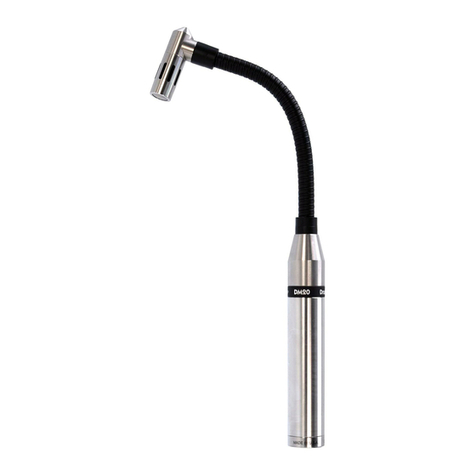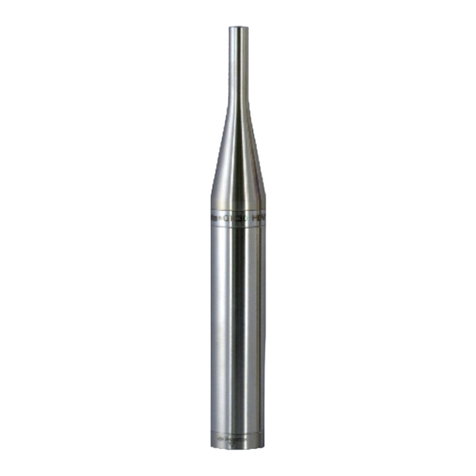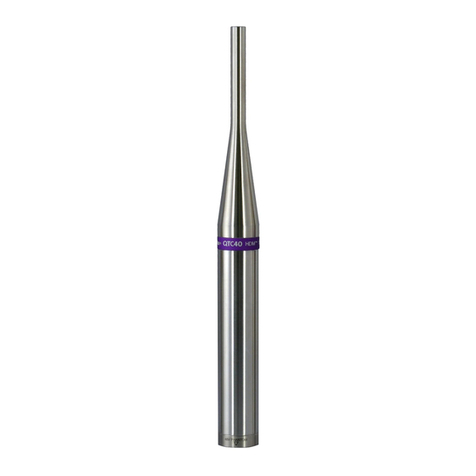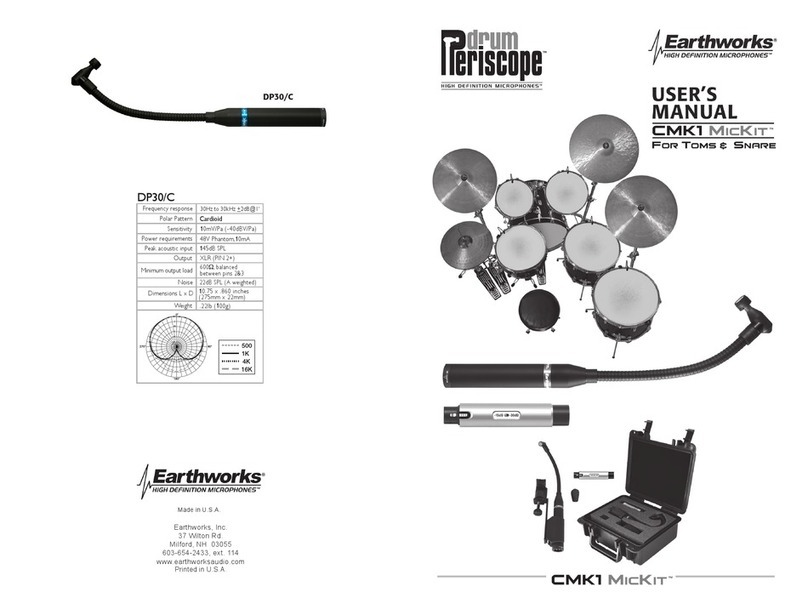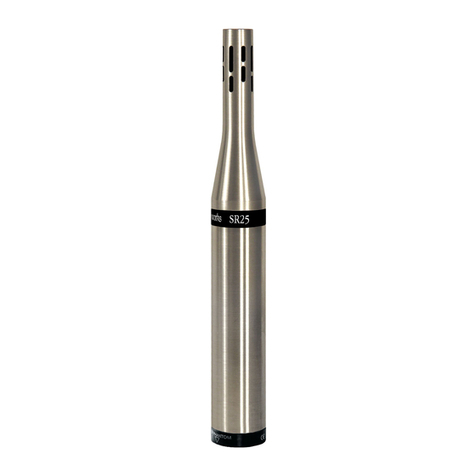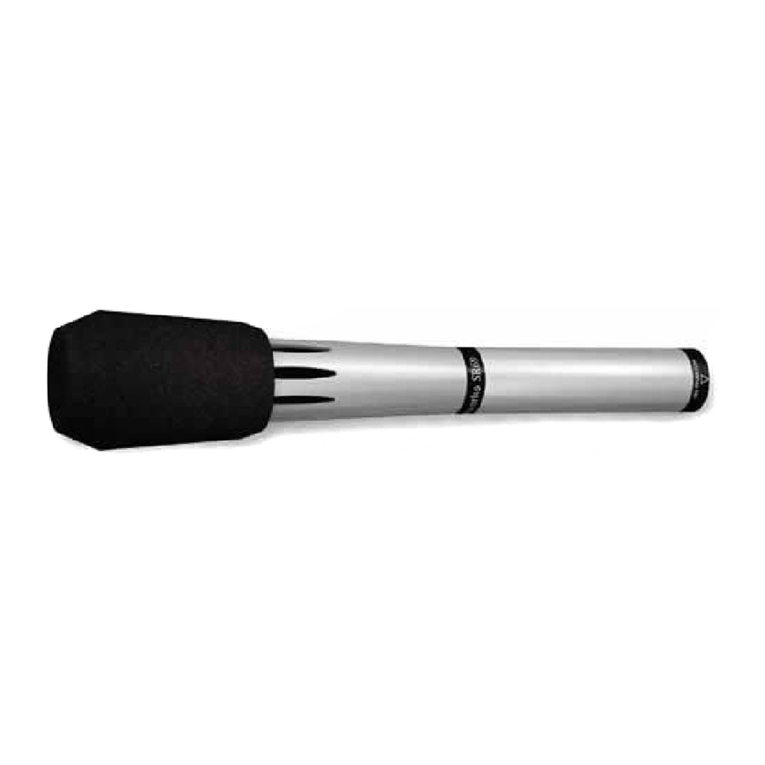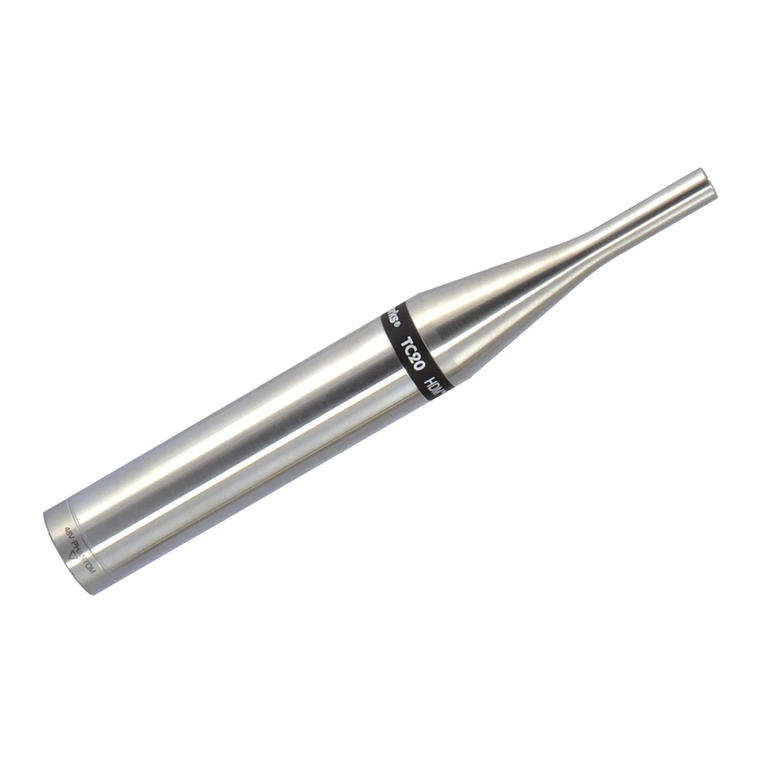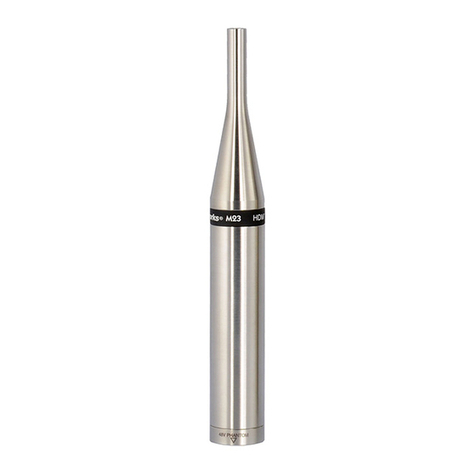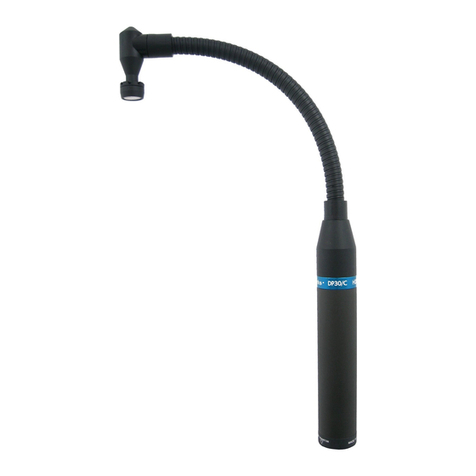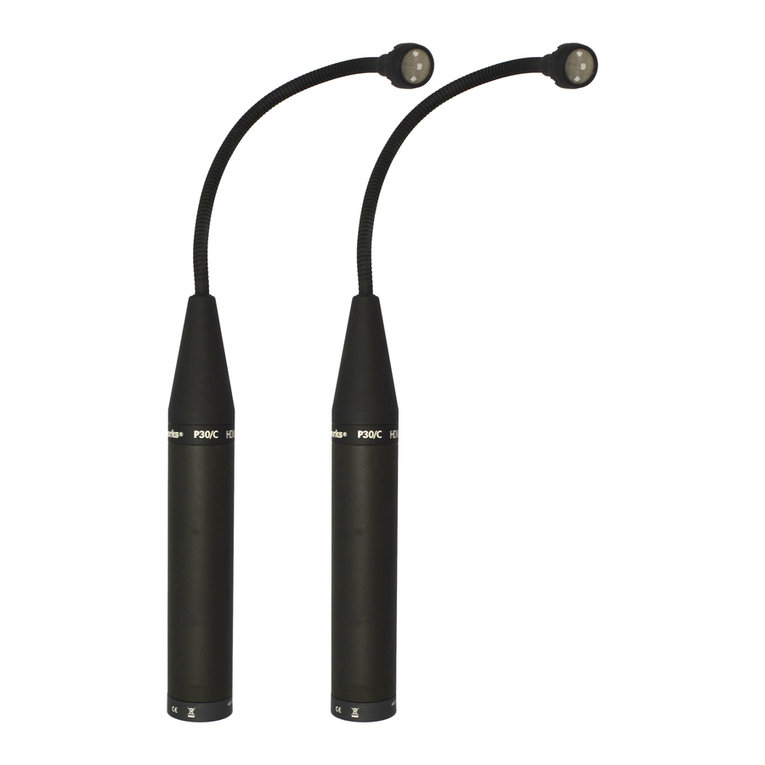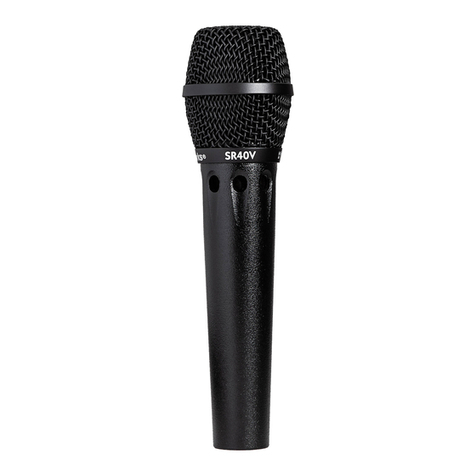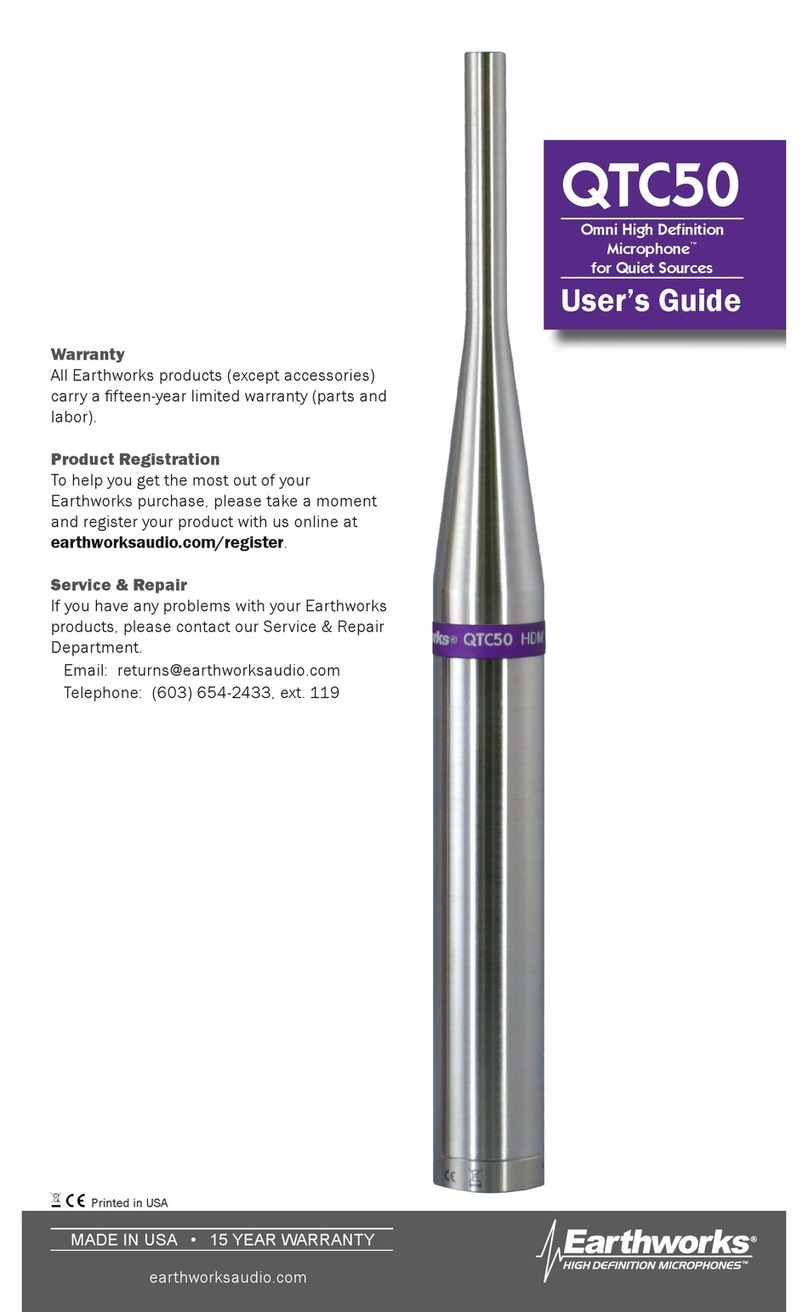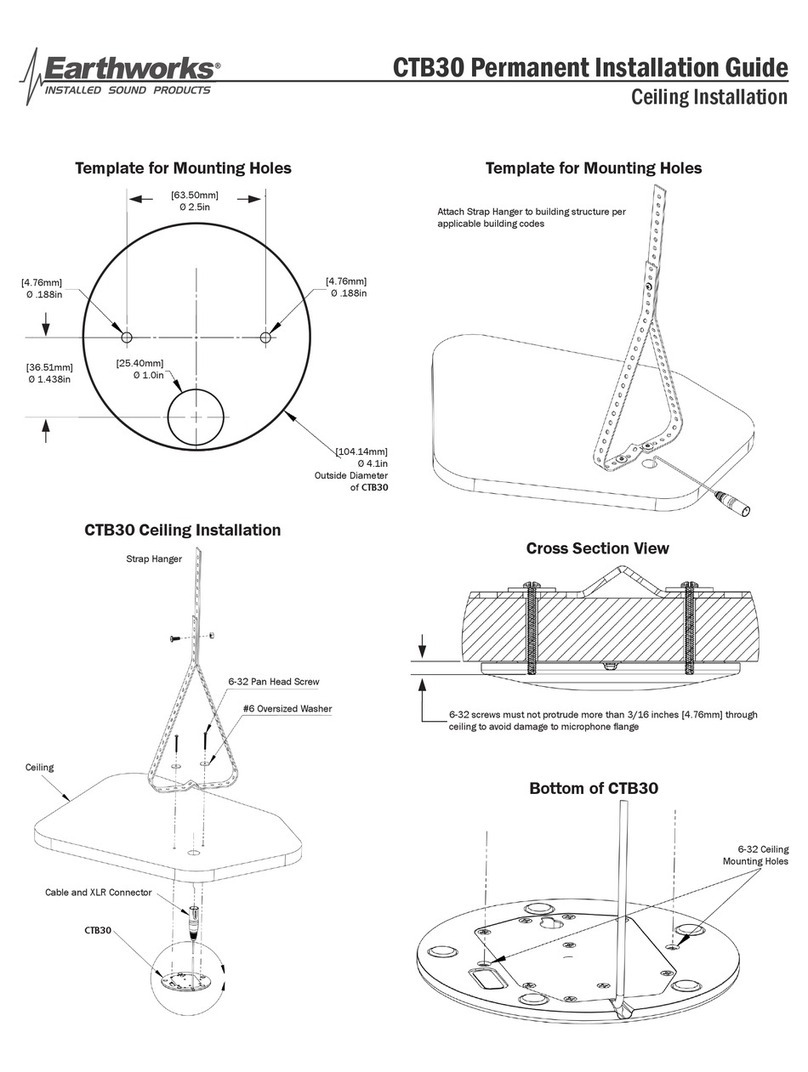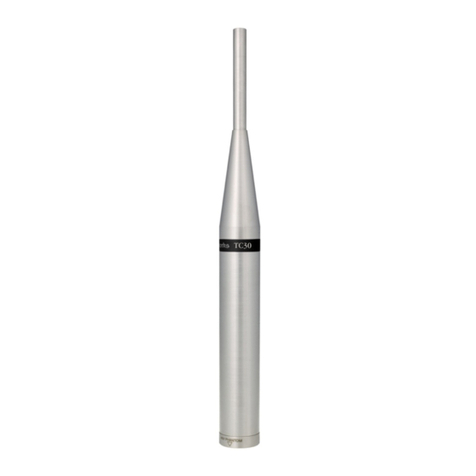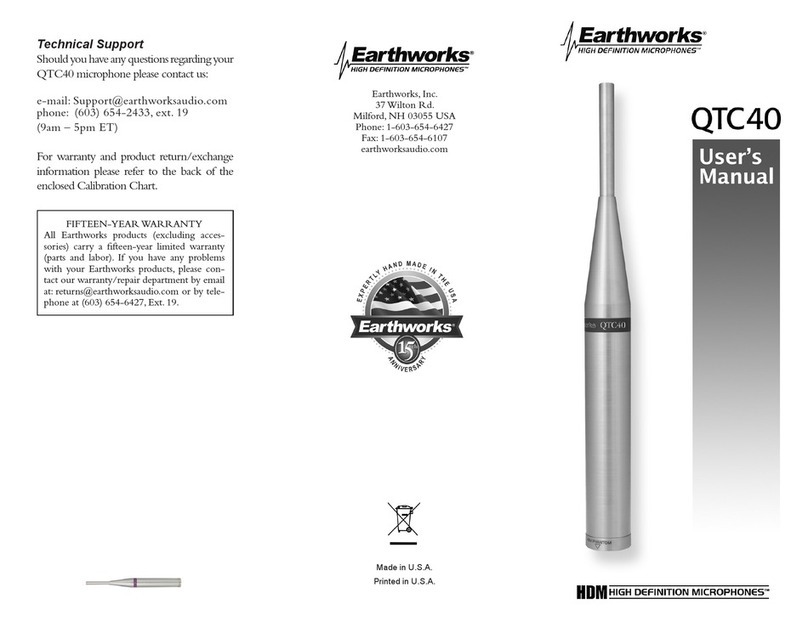1
Congratulations on your purchase of the Earthworks DrumKit™ System. You
will be thrilled with the results you will be able to obtain using Earthworks High
Denition Microphones™ for miking drum sets. If you have any questions, you
may contact us using the contact information on the back page of this manual.
Happy Drumming!
Items Enclosed with your New Earthworks DrumKit™ System:
DK25/R (Recording version)
2 - TC25 Omni Condenser Microphones
1 - SR25 Cardioid Condenser Microphone
1 - KickPad™
2 - Windscreen for TC25
1 - Windscreen for SR25
1 - Users Manual
1 - DrumKit™ System aluminum carrying case
DK25/L (Live Performance version)
3 - SR25 Cardioid Condenser Microphones
1 - KickPad™
3 - Windscreen for SR25
1 - Users Manual
1 - DrumKit™ System aluminum carrying case
IMPORTANT NOTICE - Please Read This:
The SR25 cardioid microphone is designed to be used for the kick drum.
DO NOT use the omni TC25 for close miking a kick drum. Earthworks omni
microphones have extended low frequency response that goes down in
the 5Hz to 9Hz range and in certain conditions may cause overload or
distortion when using the KickPad™. There is a lot of energy (power) at
subsonic frequencies. The SR25 and other Earthworks cardioid micro-
phones have a low frequency response in the 30Hz to 40Hz range which
will not pick up subsonic information. We therefore recommend the use
of cardioid mics on kick drum when using the KickPadTM. This not only
applies to Earthworks microphones, but applies to microphones made
by other manufacturers as well. Use only cardioid microphones for close
miking kick drums when using the KickPad.
FIFTEEN-YEAR WARRANTY
All Earthworks products carry a fteen-year limited warranty (parts and labor). If
you have any problems with your Earthworks products, please contact our
warranty/repair department by email at: returns@earthworksaudio.com or by
telephone at (603) 654-2433 Ext. 119.
2
Miking the Kick Drum and using the KickPad™
A good kick drum microphone must be designed and optimized for that specic
purpose. This means the microphone is great for kick drum and nothing else.
Therefore we designed our kick drum optimization in an external XLR package
- the KickPad™. Just plug the KickPad™ into the mic line going to the SR25
kick drum mic for magnicent results. With the KickPadTM removed, you can
use the same SR25 microphone for recording most anything. All three high
quality Earthworks High Denition Microphones™ in the DrumKit™ System can
be used for other instruments and vocals. As an added bonus, the KickPad™
will improve the sound of other popular microphones used for kick drum. By
listening to tracks 4 through 9 on the DrumKit System Demo CD, you can hear
the results of the KickPad used on our SR25 cardioid microphone and also
on an AKG D112 cardioid microphone. The KickPad will provide outstanding
results on other popular kick drum microphones such as the E-V RE20, Audix
D-6, Shure 57 and others. Simply plug the KickPad into the mic line feeding
the kick drum mic and you will be astonished with the sound.
Important Please Read
The Earthworks SR25 supplied for miking kick drum is a precision condenser
microphone and is sensitive to large bursts of air. However, this microphone
used properly will produce an incredible kick drum sound. For optimum results
it is crucial to place the SR25 at a 45 degree angle to the head (which reduces
the air burst at the front of the microphone). Whether your kick drum has a front
head or not, place the SR25 at a 45 degree angle to the front of the drum as
indicated in Figure 5. If there is a hole in the front head of the kick drum, do
not place the mic in front of the hole as there will be a large burst of air hitting
the microphone. In our eld tests, we achieved the best results and the best
sound by miking the drum just off of the rim as shown in Figure 5. Whatever
your approach, if you get any popping from the air bursts, place the enclosed
windscreen on the kick drum mic.
We hope these suggestions have been benecial for you. Don’t be afraid to ex-
periment with mic placement. You can be as creative with your mic placement as
you are with your music. You are the judge of what works best and sounds best.

